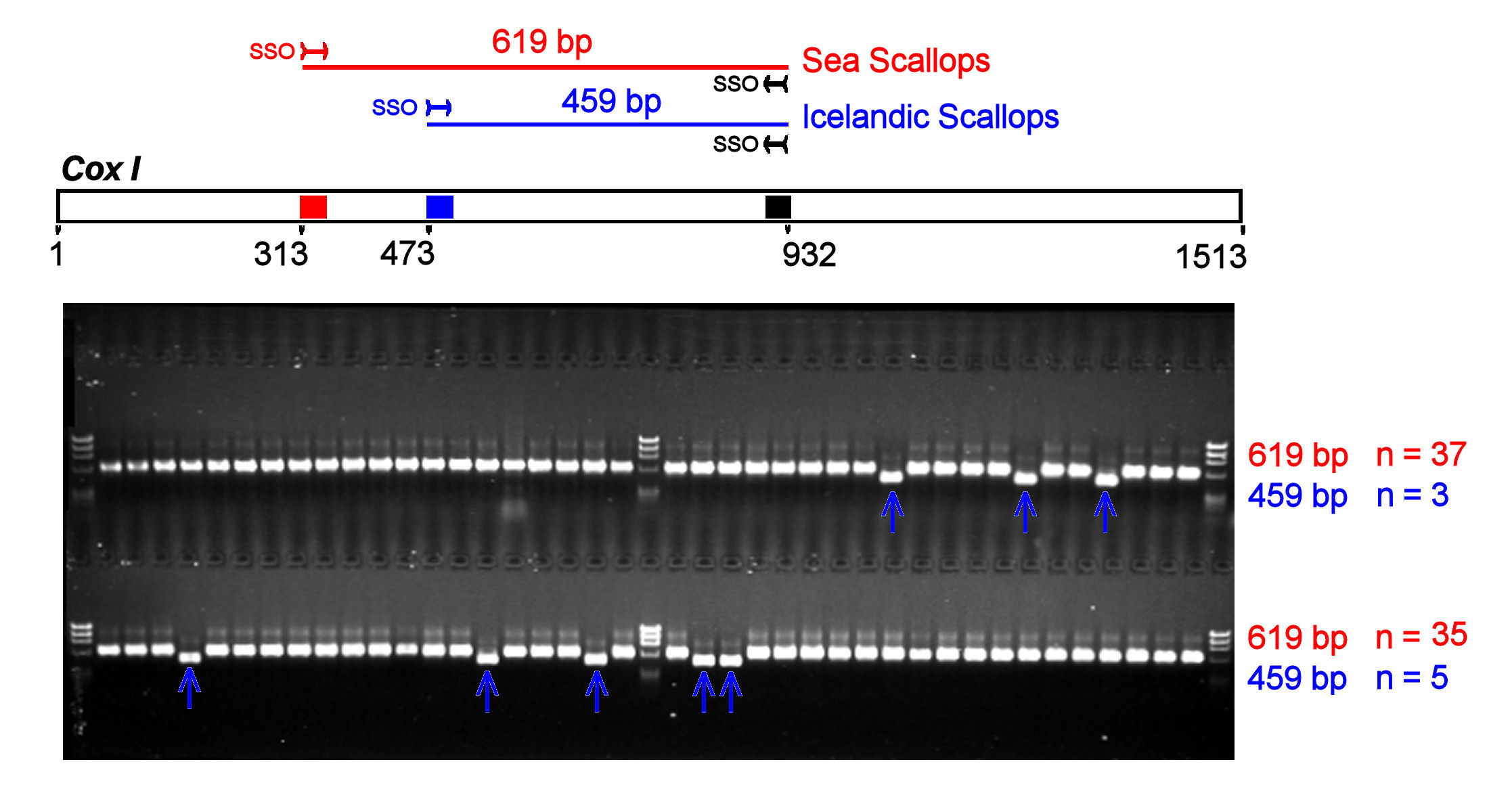
The Case of the Scurrilous Scallops:
Species-Specific
Oligonucleotide
(SSO) test for fishery & wildlife forensics
(HD
Marshall, KA Johnstone, & SM Carr (2007) Forensic Science International 167,1-7)

The Case of the Scurrilous Scallops:
Species-Specific
Oligonucleotide
(SSO) test for fishery & wildlife forensics
(HD
Marshall, KA Johnstone, & SM Carr (2007) Forensic Science International 167,1-7)